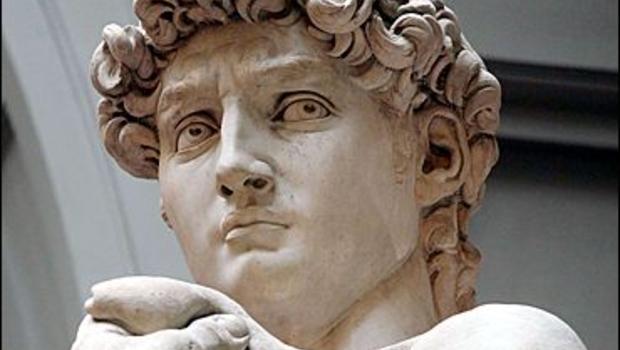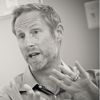
The future is not some place we are going to, but one we are creating. . . . a place that is created . . . first in mind and . . . next in activity. -- John Schaar, UC Santa Cruz[1]
[Note: This article is inspired by and borrows liberally from one of the best books I have read in years: Age of Discovery: Navigating the Risks and Rewards of Our New Renaissance, by the Oxford team of Ian Goldin and Chris Kutama.]
Like David turning to face Goliath, we are at a moment of decision.
Michelangelo created this iconic sculpture during a very specific moment in world history—what we now call the Renaissance. It was a period of roughly 100 years of unparalleled genius and innovation and also of unparalleled risk and disruption. High school history mostly focuses on the genius and innovation in art, navigation, transportation, communication, and science, to name just a few. It rarely, at least in my recollection, speaks of the interconnection of all that innovation to the immense disruption that was both its cause and its effect. For that, we can look at the schism in the Christian Church by the Protestant Reformation, the annihilation of the better part of a hemisphere’s people in the Americas, and the subjugation of the better part of another hemisphere’s people in Africa and Asia, to name just a few.
In that moment of decision depicted by Michelangelo, by all rational thought David is completely outmatched. No one present would have imagined the boy David stood a chance against the giant Goliath. Yet, as we all know from the Biblical story, David slew Goliath.
But without the benefit of hindsight (or perhaps even without possessing the knowledge of Malcolm Gladwell’s fascinating historical-medical hypothesis), David made a choice. A choice to embrace risk and to act, despite the long odds.
Michelangelo’s genius was to depict this most famous story at a different moment than had ever been depicted before. We see Michelangelo’s David at his moment of decision—David fixing his eyes with furrowed brow as he commits—instead of the most typical moment of victory—David standing one foot atop the fallen Goliath as he basks in the glory of his unexpected triumph.
Goldin and Kutarna make a compelling case that we are in a similar moment in world history—our own Renaissance—a moment that requires each of us to make our own choice, perhaps also against all rational thought.
David’s question was “would his society survive?” against the overpowering might of this Goliath and the rest of the Philistines.
Our question is not so different. “What kind of world do we want to live in?” in the face of the overwhelming force of amoral global capital markets, failing political institutions, and rising inequality, sea levels, discontent, and violence, both seemingly random and institutional?
To paraphrase Martin Luther King, Jr., the future does not roll in on the wheels of inevitability; the future is created—it is created first in thought, next in commitment, and last, and most importantly, in action.
There is little debate about the future world in which we’d like to live: it is a world in which all people enjoy high quality jobs with dignity and purpose; safe and neighborly communities that enrich our families; and a healthy environment for us and our grandchildren’s grandchildren.
So, as business leaders and as citizens, as we turn to face these Goliaths of our day, if we accept that the future is an act of our creation, what will we choose to do in our moment of decision?
Will we listen to the financial odds-makers and technophile soothsayers who tell us either that the current system is the best of all possible worlds or that the future will be wonderful as long as we leave them alone?
There are those among us who are leading the way. There is a global movement of people using the power of business to achieve a higher purpose than profit maximization—they harness the power of business to solve social and environmental problems; they strive to use business as a force for good: good for workers, good for communities, good for the environment. They redefine success in business by competing to be not just best in the world, but best for the world.
Yesterday, leaders of this global community of Davids were honored at the first Best for the World gathering at the Haas School of Business at the University of California Berkeley. More than 500 businesses across 44 industries from 35 countries were recognized as 2016 Best for the World Honorees.
Among the honorees were modern Davids working to slay the Goliath of amoral global capital markets by investing for measurable impact, not just maximum return. There were modern Davids working to slay the Goliath of climate risk by increasing access to renewable energy. And, of course, there not just Davids; there were Donnas. There were Donnas working to slay the Goliath of broken food systems by delivering millions of healthy meals to low-income public school students. And there were Donnas and Davids working to slay the Goliath of intolerable lack of gender equity by creating access to mobile technology, credit, water, and feminine hygiene products.
That is good news, because unlike the Biblical David, one person today cannot slay our modern Goliaths alone. We will need millions of Davids and Donnas to first think about which Goliaths they want to slay, to commit to taking action, and lastly, and most importantly, to act.
The future is an act of our creation—and in our new Renaissance, like in the first Renaissance, the future will arise from the actions of many Davids and Donnas inspiring and collaborating with each other.
What is the future you want to create? Now act to make it so.
[1] My dad, Sidney Gilbert, used a more complete version of this quote to open his only, or at least most important, piece of writing. It was a pamphlet self-published in February 1985 called Peace: The Alternative and it catalyzed first himself and then his profession to form Architects for Social Responsibility and use their collective power to stand up against the then-perceived existential threat of nuclear war between the United States and the Soviet Union. This experience changed him deeply, and of course, it therefore changed me through his example. I will share more about my dad’s journey to find his place as a changemaker and how it relates to the B Corp movement another time.
